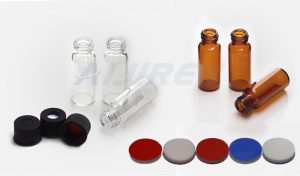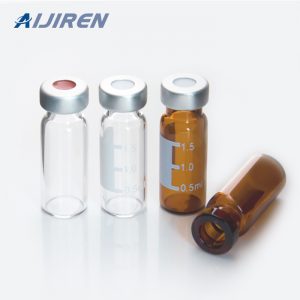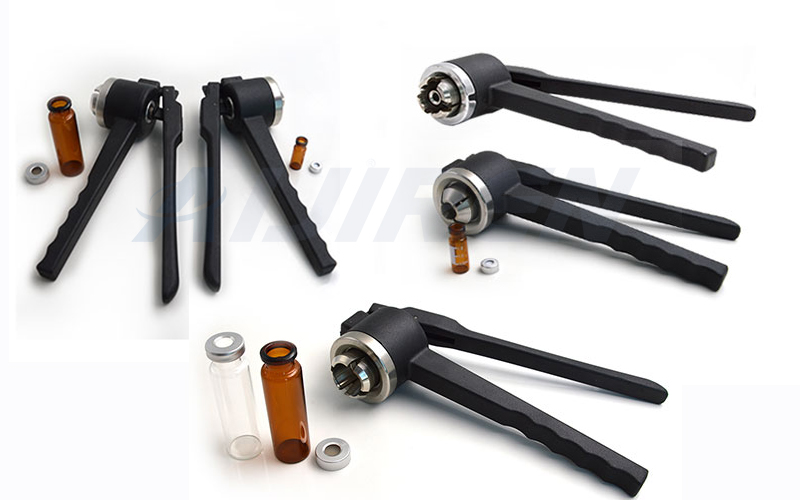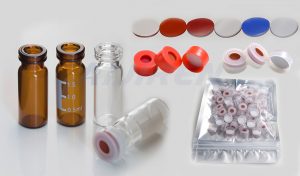High-Performance Liquid Chromatography (HPLC) is a powerful analytical technique used in various fields such as pharmaceuticals, environmental analysis, and food science. The accuracy and reliability of HPLC analysis depend not only on the instrumentation but also on the quality of sample handling and storage. HPLC vials are essential components in sample preparation, serving as containers for samples prior to injection into the chromatographic system. When choosing HPLC vials, one must consider factors such as vial type, closure mechanism, material compatibility, and analytical requirements. In this comprehensive guide, we will explore the intricacies of selecting HPLC vials, comparing crimp vials, snap vials, and screw cap vials to help you make informed decisions for your analytical needs.
Understanding HPLC Vials:
HPLC vials are small containers designed to hold liquid samples for injection into the chromatographic system. These vials must meet stringent criteria to ensure sample integrity, compatibility with analytical methods, and minimal interference with chromatographic separation. Three main types of HPLC vials are commonly used: crimp vials, snap vials, and screw cap vials. Each type offers distinct features and benefits, catering to different analytical requirements and laboratory preferences.
Aijiren HPLC Vial Feature & Advantage:
1.HPLC autosampler vials are provided in clear and amber.
2. Graduated write-on marking spot area for easy filling and identification of sample, measures 0.5, 1.0 and 1.5ml.
3. Caps are made of high quality polypropylene to exact manufacturing tolerances.
4. The precise processing of bottleneck to enable mechanical arm to operate efficiently.
5.Septa are made of the highest quality materials to ensure proper function and can be pre-slit to ease needle penetration.
6.Amber glass vials are perfect for storing samples that are sensitive to light exposure. Clear glass vials are great for testing the solubility or dispersability of materials, allowing you an unhindered view of the solution.
7. Micro-Inserts can be used on all 1.5ml vials. These vial insert Suit for 8mm 、9mm、10mm、11mm hplc vial. Different bottom shape for choosing, including flat bottom, concial bottom, and concial bottom with polyspring. 150ul, 250ul, and 300ul micro inserts are provided.
How to choose clear or amber vials? You should know: Clear VS Amber Vial: Analyzing the Light Transmittance of Autosampler Vials
Screw Cap Vials:
Screw cap vials, also known as screw-neck vials or screw-thread vials, feature a threaded neck and closure system that allows for easy screwing and unscrewing of the cap. Screw cap vials offer a secure seal and are suitable for applications requiring frequent sample access or storage. These vials are typically made of high-quality borosilicate glass or inert polymers such as polypropylene, providing excellent chemical resistance and compatibility with a wide range of sample matrices. Key features of screw cap vials include:
- Convenient Closure: Screw cap vials offer simple and straightforward sample sealing, allowing for easy access to samples without the need for additional tools.
- Security: Screw caps provide a reliable seal, minimizing the risk of sample contamination, evaporation, or leakage during storage and analysis.
- Versatility: Screw cap vials are available in various sizes, capacities, and configurations to accommodate different sample volumes and analytical requirements.

Crimp Vials:
Crimp vials, also known as crimp-top vials or crimp seal vials, feature a flat or rounded top with a narrow neck that requires a crimping tool to secure the aluminum or steel cap onto the vial. The crimping process creates a secure seal, preventing sample leakage or evaporation during storage and analysis. Crimp vials are typically made of high-quality borosilicate glass or inert polymers such as polypropylene, offering excellent chemical resistance and compatibility with a wide range of sample matrices. Key features of crimp vials include:
- Secure Seal: The crimping mechanism provides a tight and reliable seal, minimizing the risk of sample contamination or evaporation.
- Compatibility: Crimp vials are compatible with most HPLC autosamplers and injection systems, ensuring seamless integration into laboratory workflows.
- Versatility: Crimp vials are available in various sizes, capacities, and configurations to accommodate different sample volumes and analytical requirements.


Snap Vials:
Snap vials, also known as snap-cap vials or snap seal vials, feature a flat or rounded top with a snap-on closure mechanism that does not require a crimping tool. Instead, the cap is securely pressed onto the vial, creating an airtight seal without the need for additional equipment. Snap vials are typically made of high-quality borosilicate glass or inert polymers such as polypropylene, offering similar chemical resistance and compatibility as crimp vials. Key features of snap vials include:
- Convenient Closure: Snap vials offer quick and easy sample sealing without the need for specialized crimping tools, saving time and effort in sample preparation.
- Compatibility: Snap vials are compatible with most HPLC autosamplers and injection systems, providing versatility and flexibility in laboratory operations.
- Durability: Snap vials are designed to withstand repeated use and handling, offering reliable performance and long-term storage stability.

Choosing the Right HPLC Vial:
When selecting HPLC vials, consider the following factors to ensure compatibility with your analytical needs and laboratory requirements:
- 1.Sample Compatibility: Choose vials made of materials that are chemically inert and compatible with your sample matrices and analytical solvents. Borosilicate glass and polypropylene are common materials used in HPLC vials, offering excellent chemical resistance and minimal interference with sample analysis.
- 2.Closure Mechanism: Consider the closure mechanism that best suits your laboratory workflow and sample handling procedures. Crimp vials, snap vials, and screw cap vials offer different sealing mechanisms, each with its advantages and limitations. Choose the closure type that provides the most secure seal and ease of use for your specific application.
- 3.Instrument Compatibility: Ensure that the chosen vials are compatible with your HPLC autosampler and injection system. Verify that the vial dimensions, neck size, and closure mechanism are compatible with the specifications of your instrument to prevent compatibility issues during sample analysis.
- 4.Sample Volume and Configuration: Select vials with appropriate volume capacities and configurations to accommodate your sample volumes and analytical requirements. Consider factors such as sample dilutions, headspace requirements, and injection volumes when choosing vial sizes and configurations.
- 5.Quality and Certification: Invest in high-quality HPLC vials that meet industry standards and regulatory requirements for sample storage and analysis. Look for vials manufactured by reputable suppliers and certified for compatibility with HPLC instrumentation and analytical methods.
Conclusion:
Choosing the right HPLC vial is crucial for ensuring sample integrity, analytical accuracy, and reliable chromatographic results. Crimp vials, snap vials, and screw cap vials offer distinct features and benefits, catering to different laboratory preferences and analytical requirements. By understanding the characteristics and advantages of each vial type, laboratory professionals can make informed decisions in selecting HPLC vials that best suit their analytical needs and laboratory workflows. Whether it’s the secure seal of crimp vials, the convenience of snap vials, or the versatility of screw cap vials, choosing the right HPLC vial is essential for optimizing sample preparation and achieving precise and reproducible chromatographic results.